What to Experience during Your China Silk Road Tour
Crossing three provinces of China, the tour along the Silk Road is an experience of adventure, excitement, and discovery. As you move west from Xi’an, you will discover the different cultures of China, a country that consists of over 50 ethnic groups, as well as see some of the most spectacular scenery in the country, from the lush valleys and rolling hills to the arid deserts and plains.
Just as the people and cultures differ from region to region, often within the same province, so do the cuisines, offer a wide variety of dishes and ingredients. Exploring the area of the Silk Road by taste is one of the major delights of these tours, and you will get the chance to try every type of cuisine available along its length.
Culture Experience
Within the bounds of the Silk Road route within China, there are three main cultural groups, although there are many smaller ethnic people within the groups of each culture.
The Han
The largest ethnic group in China, the Han people account for more than 1.2 billion of the Chinese population, and around 18 percent of the total global population. Concentrated in mainland China, the Han people are descended from the original Hua and Xia tribes, the agricultural tribes that lived along the banks of the Yellow River.
The Han culture spread outwards from the Yellow River to cover the whole of Southern China over the course of the last two millennia, absorbing the local ethnic groups that they encountered in their expansion. Considered to be one of the first great dynasties of China, the size and reach of the Han Dynasty equaled that of the mighty Roman Empire, and made China the major influence in Southeast Asia.
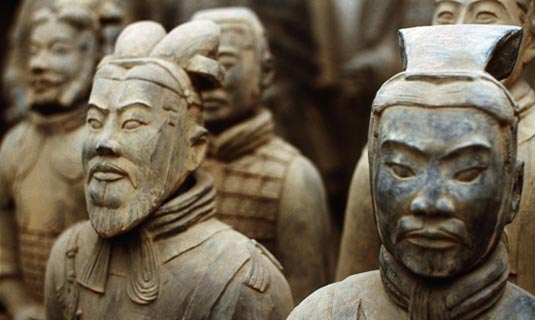
The Terracotta Warriors in Xian is one of the popular culture heritage of the Han in China.
The culture of the Han people has been heavily influenced by Confucianism, which has shaped much of the Chinese philosophy and thought throughout its Imperial history. This has led to filial piety and the ideas of ancestor-worship and clan associations. The Han culture has also been responsible for much of the literature of China over the last 3,000 years, as well as contributing to and influencing the arts, science and technology, and humanities throughout history.
The Hui
The Hui people are one of the Chinese ethno-religious groups that are predominantly Muslim, and are mainly found in Northwest China, though there are braches of Hui people throughout China. Consisting of more than 10 million people according to the latest Chinese census, the Hui peoples extend into Kazakhstan and Kyrgyzstan as well.
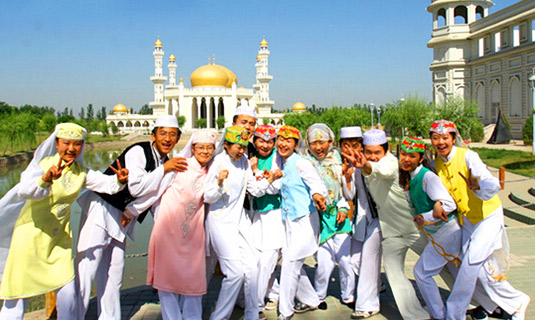
The traditional clothing of Hui Nationality
Due to their practice of Islam, the cultural differences of the Hui people are distinct from the Han Chinese, including the dietary laws of Islam which forbid the consumption of pork, the most common meat eaten in China. The traditional clothes of the Hui Muslims differs greatly from that of the Han, and includes the use of a small cap for men and a headscarf for the women that are of age.
The Hui people are believed to have been descended from many of the Silk Road traders that traveled the route between China and the Middle East, and it is widely acknowledged that the basis for the ethnic group lies in the intermarriage of Persian and Arabian traders to local Han Chinese. In the Tang, Song, and Mongol Yuan Dynasties, immigration from the predominantly Muslim parts of Persia and Central Asia was encouraged, welcoming the traders and appointing them as Central Asian officials along the trade route.
The Uyghur
The name Uyghur traditionally refers to the people of the Xinjiang Uyghur Autonomous Region of northwest China. The Uyghur people are a Turkic ethnic group that have resided in the region for centuries, and are descended from migrants from Mongolia that moves southwest in around 700 Ad, and founded the Uyghur Empire.
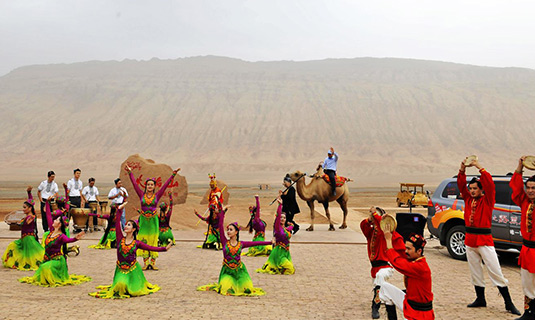
The traditional clothing of Uyghur Nationality
It is during this time of the Chinese dynastic rise and fall that the Uyghur people came into contact with the Han Chinese. Predominantly Muslim, the people of the Uyghur ethnic group are split into two distinct cultural and historic identities, those to the north of the Tianshan Mountain in the Zhungar Basin and those to the south in the Tarim Basin and Taklamakan Desert.
The Tarim Basin is the heartland of the Uyghur people, and their society is based on the traditional oasis agriculture of their ancestors’ rural lifestyles. To the north, the Uyghurs of the Zhungar basin are predominantly nomadic pastoralists, largely influenced by their Kazakh and Mongol neighbors and heavily influenced by the Russian tribes.
The major differences in the Uyghur culture to that of the Hui, are the music and festival traditions, which are cheerful and exuberant. Fast-paced and expressing a passion for life, the traditional instruments such as the Dutar, Rawap, and Khushtar feature heavily as the women dance with passion and gusto, with a lot of gyrating body movements.
Natural Landscape
Across the length of the Silk Road in China, the landscapes vary from region to region, with many varying altitudes and climates. This has given rise to some of the most fantastic natural landscapes in China, with hundreds of astounding tourist attraction that are popular with the foreign tourists that eager to enjoy a China Silk Road tour.
Zhangye Danxia Landform
Known as “the eye candy of Zhangye” the Zhangye Danxia Landform Geological Park is one of the most amazing natural sights in the world. Filled with red rocks and rainbow-colored ridges, the landscape has many sheer red cliffs, several of which reach hundreds of meters into the sky. Lying alongside multi-colored ridges of weather-beaten strata rocks, the landscape stretches as far as the eye can see, standing out against the green and gray colors of the plains surrounding it.
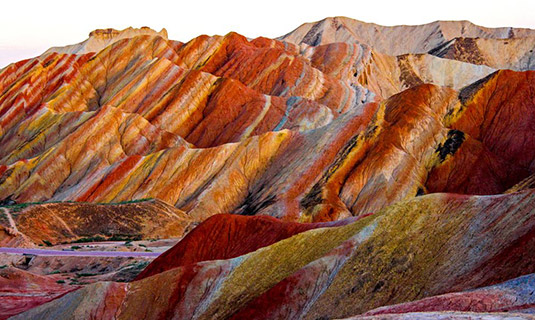
Zhangye Danxia Landform
Located just 30 minutes from the city of Zhangye in Gansu Province of Northwest China, the park is one of the most popular natural attractions. Sightseeing car tours take you between the four viewing platforms in the park, which takes around 2 hours to complete the normal tour. Tourist buses are not permitted in the park, though you can walk between the four platforms. The walk can take several hours, and two of the platforms are on high hills, which require a long climb to get to the top.
June to September is the best time to visit, when the weather is comfortable and not too hot. Dawn and dusk are the most popular viewing times, and in the height of the tourist season, the viewing platforms can be rather full. AS the sun drops in the sky, the colors of the rock layers change in the sun’s dying rays, a sight that is even more stunning if it rained the day before.
Echoing Sand Mountain and Crescent Lake
Known as Mingsha Mountain, the name means “Echoing Sand Mountain”, and is named for the sand-encrusted hill it is, standing many meters high in the area near Dunhuang in Gansu Province. The sand of the mountain has many colors, from red and yellow to green, black, and white, and with a little light breeze, the shifting sand makes a dulcet singing tone that is likened to soft music.
The legend of how the sand started to sing tells of a general that came to the mountain to fight his enemies, but a sandstorm blew up and covered both armies in sand, making the mountain. Legend says that the soldiers continued to fight each other, long after they were buried, and the sounds of the sand is the muffled sound of battle still going on inside the sand mountain.
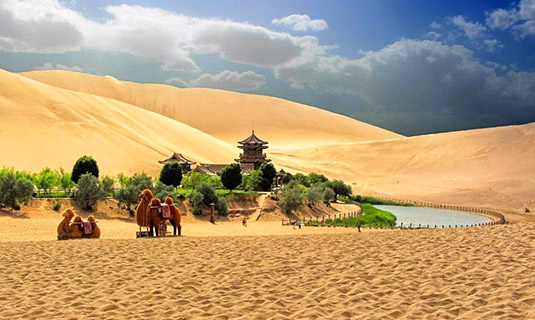
Echoing Sand Mountain and Crescent Lake
Around one side of the mountain lies the perfect crescent shape of the Crescent Lake. Also known as the Sand Well and the Medicine Spring, this amazing oasis boasts its continued survival in one of the most arid desert areas in Asia. Reputed as the “First Desert Spring under the heavens”, the crystal clear waters of the lake are sweet and fresh to the taste.
Heavenly Lake
Around 110 kilometers to the east of Urumqi lies the Heavenly Lake, a crescent-shaped lake that lies in the middle of the Bogda Peak. A popular tourist attraction in the height of summer, the lake attracts boaters and tourists by the thousands, as the silvery mountains soar into the sky, their slopes covered in lush pastures and colorful wildflowers.
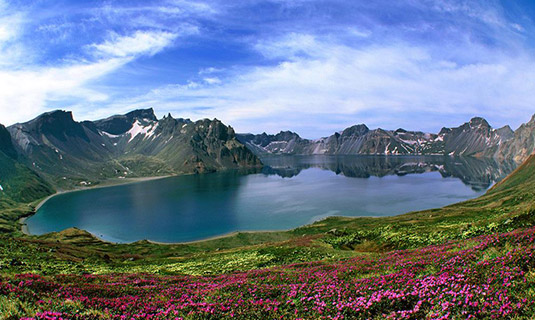
Heavenly Lake
A fairyland location, this charming and tranquil lake is a stunning place to visit, and the lake is a popular place for fishing at dusk. Formed by the melting of an ancient glacier on the mountain, the lake is fed by the snow melt of spring, and the natural beauty is one of the area’s most spectacular sights.
>>Join South Xinjiang Silk Route in-depth exploration tour
Taklamakan Desert
Located in the middle of the Tarim Basin in Xinjiang Province, the Taklamakan Desert is the largest desert in China. Believed to be the world’s second largest shifting desert, the local name means “You can get in but you will never get out”.
The desert has another name among the locals in the Tarim Basin, and is known as “the Sea of Death”. While there may be sand dunes between 100 and 300 meters high that move across the desert, the area is rich in natural resources, with natural gas, oil, and groundwater to be found beneath its deadly and treacherous surface.
However, the continuous movement of the dunes threatens the way of life of the local people, and the number of oasis in the desert, and the planting of trees and building of windbreak belts over the last 50 years has helped the local living conditions to improve, with more than 80 species of resident birds now living within the area.
Local Food Taste
Traveling along the Silk Road in China is not just an adventure of the body and soul, but of the taste buds as well. As you traverse this long and ancient highway, you will taste a plethora of delightful dishes of the tantalizing local cuisines, from the traditional fare of Shaanxi to the mosaic of flavors of Xinjiang, influenced by their Middle East and Central Asian ancestry.
In Xi’an, you can taste the delights of local fare, from the Yang Rou Pao Mo, an aromatic bowl of mutton soup, to the Roujiamo and Liangpi, the meat-stuffed bread and cold spicy noodles that make a perfect summer evening snack.
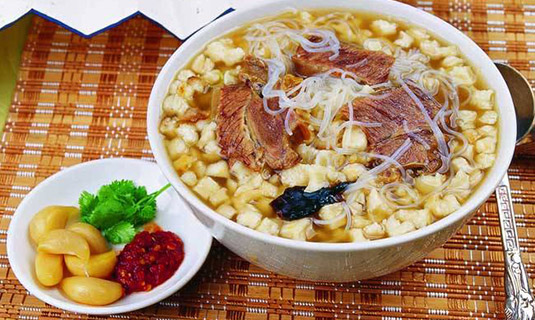
Yang Rou Pao Mo
Gansu is a heaven for those that like wheat-based foods, and is one of the most popular places in China to eat hand-pulled noodles. Many of the tasty dishes are mutton or beef based, due mainly to the Hui Muslim influence, and the food markets of Lanzhou are second to none.
For pasta like no Italian has ever cooked, Dunhuang is the center of the culinary world, with famous dishes such as Yellow Noodles with Donkey Meat, Jiangshui Noodles, and the local Dunhuang Niangpizi. Wash it all down with some apricot peal water and you have the perfect pasta meal.
In Xinjiang, the tastes are very different, with a very Middle Eastern and Central Asian flavor. Spicy lamb kebabs are the iconic street food of Xinjiang, made from sizzling lamb meat stuffed into the local Nang breads that are the staple bread of the Uyghurs.
>>Join the China Silk Road tour from Xi'an to enjoy the local food
You can also try the spicy chicken stew known as Dapanji, with its potatoes, peppers and spices. Or try the representative Uyghur dish, Uyghur Pilaf, a rice dish that has soaked up the juices of the carrots, onions, peppers, cumin, and tender lamb to make a palatable pleasure for the tongue.
Related Articles and Posts
Related Trips
-
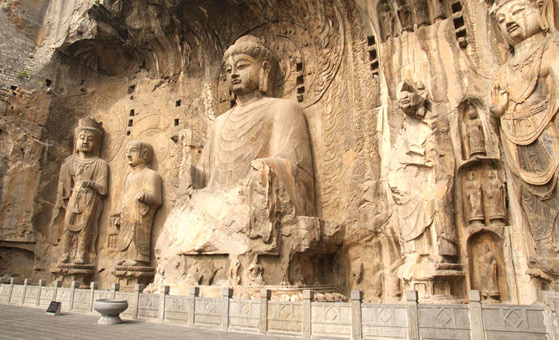 4-Day Jiayuguan Pass and Dunhuang Silk Road Short BreakView Details
4-Day Jiayuguan Pass and Dunhuang Silk Road Short BreakView DetailsJiayuguan - Dunhuang
-
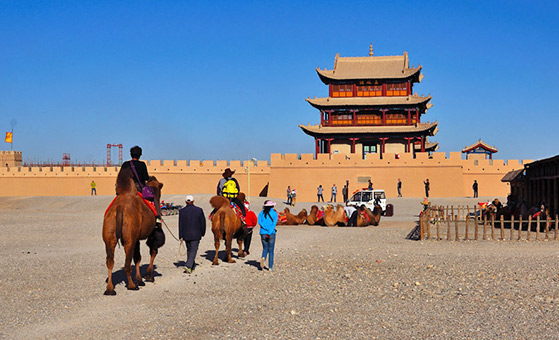 8-Day Lanzhou Xiahe Jiayuguan Dunhuang Silk Road TourView Details
8-Day Lanzhou Xiahe Jiayuguan Dunhuang Silk Road TourView DetailsLanzhou - Xiahe - Lanzhou - on the train - Jiayuguan - Dunhuang
-
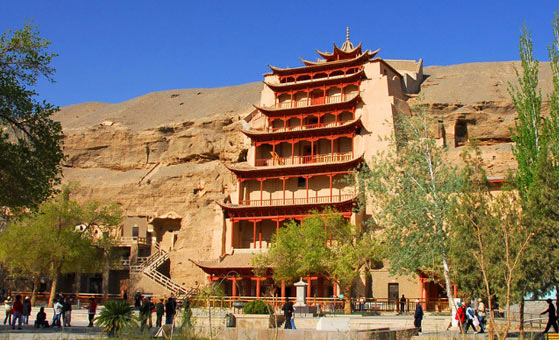 10-Day Highlights of the China Silk Road TourView Details
10-Day Highlights of the China Silk Road TourView DetailsDunhuang - on the train - Turpan - Urumqi - Kashgar - Taklamakan Desert Camp - Kashgar - Urumqi
Ask a Quick Question
 BACK
BACK

 We, the 3rdpoletour, are the pioneer of in-depth Sichuan tour. We commit to offer you the most professionaltour service to facilitate your Sichuan travel.
We, the 3rdpoletour, are the pioneer of in-depth Sichuan tour. We commit to offer you the most professionaltour service to facilitate your Sichuan travel. 

0 Comments ON “What to Experience during Your China Silk Road Tour”